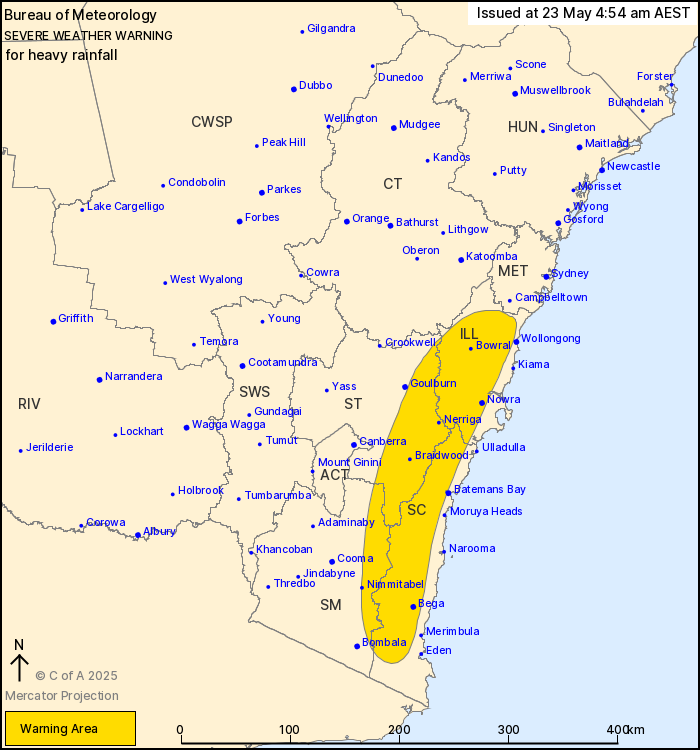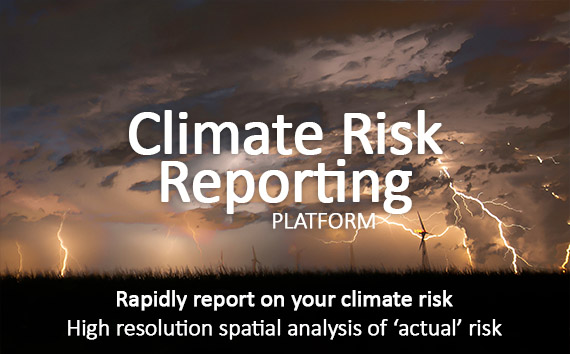Source: Bureau of Meteorology
For people in Illawarra, South Coast and parts of Southern
Tablelands and Snowy Mountains Forecast Districts.
Issued at 4:54 am Friday, 23 May 2025.
Heavy rainfall shifting towards the Illawarra and South Coast
today, before easing later in the day.
Weather Situation: A persistent and moist onshore flow continues
to bring areas of widespread rain to central and southern coasts
today. Heavy rainfall is expected about the Illawarra, South Coast
and adjacent inland terrain during the day, but will gradually ease
from the north in the afternoon and evening.
Ongoing moderate rainfall and areas of HEAVY RAINFALL are expected
during Friday over the Illawarra, South Coast and eastern parts of
the Southern Tablelands and Snowy Mountains districts. Six-hourly
rainfall totals of 60 to 100 mm are possible with 24-hourly totals
between 100 and 180 mm.
Rainfall is expected to ease gradually from the north, through the
Illawarra and northern portion of the warning area in the
afternoon, then through the South Coast and southern warning area
in the evening.
A Flood Watch and various Flood Warnings are current for multiple
catchments in the state. Please refer to
http://www.bom.gov.au/nsw/warnings/
Locations which may be affected include Nowra, Bowral, Braidwood,
Bega, Captains Flat and Nimmitabel.
Severe weather is no longer occurring in the Hunter, Metropolitan
and Central Tablelands districts and the warning for these
districts is CANCELLED.
105mm was observed at Cooranbong (Lake Macquarie) in the 6 hours
to 2:20am.
100mm was observed at Lake Macquarie (Mandalong) in the 6 hours to
2:32am.
-
Other significant rainfall observations between 9:00 am Thursday
and 4:00 am Friday include:
179.0 mm at Richmond Airport.
176.0 mm at Robertson.
161.0 mm at Macquarie Pass.
150.0 mm at Mandalong (Lake Macquarie).
146.0 mm at Newcastle TAFE.
135.0 mm at Wattamolla.
130.0 mm at Wentworth Falls.
The State Emergency Service advises that people should:
* Don't drive, ride or walk through flood water.
* Keep clear of creeks and storm drains.
* If you are trapped by flash flooding, seek refuge in the highest
available place and ring 000 if you need rescue.
* Be aware that run-off from rainfall in fire affected areas may
behave differently and be more rapid. It may also contain debris
such as ash, soil, trees and rocks.
* After bushfires, heavy rain and the loss of foliage can make the
ground soft and heavy, leading to a greater chance of
landslides.
* Stay vigilant and monitor conditions. Note that the landscape
may have changed following bushfires.
* For emergency help in floods and storms, ring your local SES
Unit on 132 500.

22/May/2025 07:59 PM



